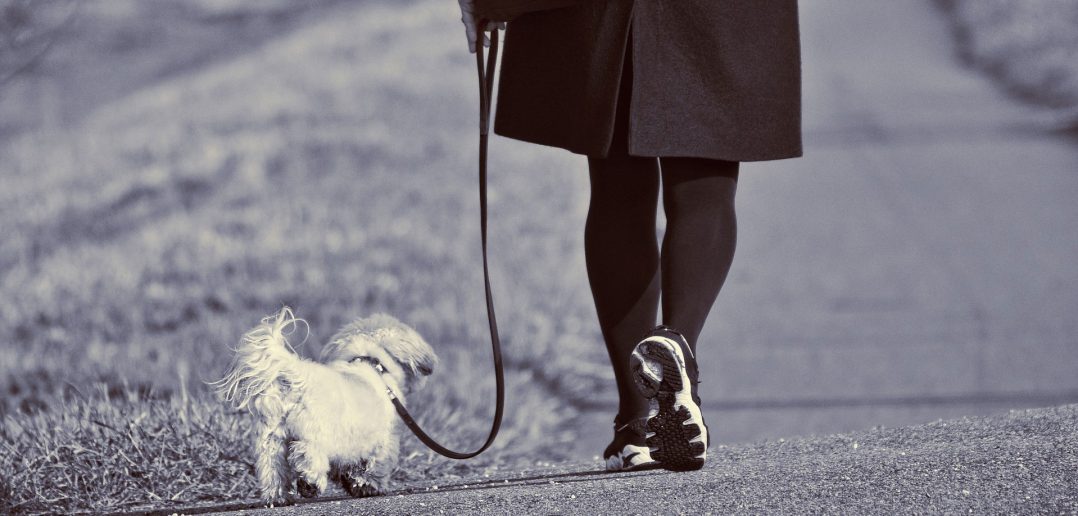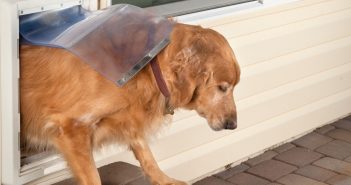Teaching your dog to walk on a leash is crucial to his and your safety, particularly if he’s a big dog. Dogs need to learn to walk on a leash without pulling your arm out of its joint, and without choking themselves. Even walking small dogs that have the propensity to pull their owners could put you both in jeopardy and, at the very least, can be awkward.
A basic rule is that dogs should never be allowed to run off at will, they should be on a lead at all times – unless they’re with you in a secure and safe place.
As with all training methods, it helps to begin teaching your dog all about leashes and what’s expected inside before venturing outside. If you’ve never put a collar on your dog, you’ll want to lay it out on the floor and let your pup smell it. Don’t allow him to play with it or bit it, just allow him to check it out.
Once it’s ignored, place the collar around your dog’s neck. Make sure it fits closely, but isn’t so tight it would choke him. The rule of thumb here is that you don’t want to be able to put more than two (2) finger breadths between the collar and your dog’s neck. Ensure you find the proper fit for your dog before moving forward.
Regardless of how large your dog will get in the near future, don’t purchase a collar and leash that’s too heavy NOW as you start training. And don’t get a collar for a small pup when you already have a puppy that weighs 30 pounds at just twelve weeks old. In other words, use common sense when fitting the collar and leash. You don’t want a collar that’s too small or too big.
Do remember that your little puppy will grow and that the collar you buy when he’s twelve weeks old probably won’t fit him when he’s six months old. You could consider buying an adjustable dog collar that will give you some flexibility of adjusting the size as the puppy grows.
Once you’ve got the collar just right and your dog’s used to it, attach the lead and allow him to drag it around for a while. Just keep a close eye on your pup to be sure the leash doesn’t get tangled up in something . . . furniture legs and other obstacles that could potentially hurt your dog. Do not leave him unattended at all during this time. Just allow him to smell and become acquainted with the lead.
Still inside, grab a high-reward treat and then grab your end of the lead and, with your dog on the left side of you and the leash in that hand and slack, get his attention and ask him to “sit.” Start walking forward with your left foot first and as your pup walks along side you give him the “heel” command.
If he attempts to pull you forward, gently pull back on the lead. After your dog has come back to you, or has stopped pulling, allow him to start walking again.
Every time he pulls forward you need to gently, but firmly, pull in the opposite direction. This teaches your dog that as soon as he pulls he’s not going to actually go anywhere.
Love and patience teaches love and patience . . . and these are exactly what we want to teach our dogs. Basic dog training, like having your dog able to walk with you comfortably on a leash, helps ensure that everyone enjoys being around your furry friend and that your dog is as happy and healthy as he can be.





1 Comment
A gentle hand and patience do go a long way in training your dog to do anything. Dogs, in general, want to please their owners and are desperate for approval.